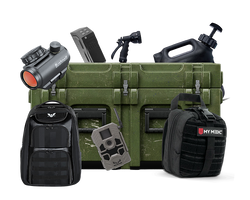Kickboxing for Self Defense: The Ultimate Guide to Empowerment and Preparedness
Table of Contents
- Introduction
- The Mechanics of Kickboxing
- Benefits of Kickboxing for Self Defense
- Choosing a Kickboxing Program
- Integrating Gear for Self Defense
- Conclusion
- FAQ
Introduction
Imagine finding yourself in a potentially dangerous situation, your heart racing, adrenaline pumping, and the instinct to protect yourself kicking in. What would you do? Many individuals may feel helpless in such scenarios, but what if you had the skills to defend yourself effectively? Kickboxing for self-defense is not just a fitness trend; it’s a powerful way to equip yourself with practical skills that can make a significant difference when it matters most.
Kickboxing, a hybrid martial art that blends elements of boxing and karate, offers an accessible way to learn striking techniques while also enhancing fitness. The relevance of kickboxing for self-defense has become increasingly acknowledged in recent years, especially as more people seek practical self-defense strategies that are easy to learn and implement. This blog post aims to explore the multifaceted benefits of kickboxing as a self-defense skill, how it can empower individuals, and what to consider when choosing a training path.
Throughout this post, you will learn about the mechanics of kickboxing, its advantages for self-defense, and the importance of proper training. We'll also highlight how to choose a suitable kickboxing program, whether you are a beginner or looking to enhance your existing skills. Additionally, we will introduce Crate Club's subscription services, which can provide you with the tactical gear you need to complement your training journey.
The Mechanics of Kickboxing
Kickboxing encompasses a variety of striking techniques, including punches, kicks, elbows, and knees. Each of these techniques is designed to maximize power and efficiency while minimizing risk during a confrontation. Here’s a closer look at some of the fundamentals:
Striking Techniques
-
Punches: The basic punches used in kickboxing include the jab, cross, hook, and uppercut. Mastering these strikes is essential for building a solid foundation in kickboxing.
-
Kicks: Unlike traditional boxing, kickboxing incorporates various kicking techniques, such as front kicks, roundhouse kicks, and side kicks, which can effectively target an opponent's body and head.
-
Elbows and Knees: These techniques are particularly useful in close-range combat situations and can be devastating when executed correctly.
Movement and Footwork
Effective footwork is crucial in kickboxing. It allows practitioners to maintain balance, evade attacks, and position themselves for counter-strikes. Key footwork skills include:
- Shuffling: A quick and agile way to move in and out of range.
- Pivoting: This technique helps you to change angles quickly, making it difficult for an opponent to predict your next move.
- Weaving: A defensive movement that allows you to slip punches while closing the distance.
Defense Strategies
In addition to striking, self-defense is about avoiding and mitigating threats. Kickboxing teaches essential defensive techniques, including blocking, parrying, and head movement, which can help you evade attacks and create openings for counter-attacks.
Benefits of Kickboxing for Self Defense
Kickboxing is not only a great workout but also a highly effective form of self-defense. Here are several key benefits:
1. Enhanced Physical Fitness
Kickboxing is an excellent cardiovascular workout that improves strength, endurance, flexibility, and coordination. Engaging in regular kickboxing training can lead to significant physical improvements, which can be advantageous in a self-defense scenario.
2. Increased Confidence
Training in kickboxing instills a sense of empowerment. As you improve your skills and become more proficient in striking and defending, your confidence grows. This newfound self-assurance can be invaluable in high-pressure situations, allowing you to respond effectively.
3. Practical Self-Defense Skills
Kickboxing equips practitioners with practical skills that can be utilized in real-life situations. The striking techniques learned can be applied directly in self-defense scenarios, making it a valuable tool for personal safety.
4. Situational Awareness
Training in kickboxing encourages heightened awareness of your surroundings. Awareness is a crucial aspect of self-defense, as it helps you recognize potential threats before they escalate.
5. Mental Toughness
Kickboxing training develops mental resilience and discipline. The ability to remain calm under pressure is vital during a confrontation, and the focus required in training helps cultivate this skill.
Choosing a Kickboxing Program
When considering kickboxing for self-defense, selecting the right program is crucial. Here are some factors to keep in mind:
1. Class Structure
Look for classes that emphasize practical techniques and sparring. While cardio kickboxing classes are enjoyable, they may not adequately prepare you for real-world self-defense scenarios. A program that includes sparring and partner drills can enhance your skills significantly.
2. Instructor Credentials
Research the qualifications and experience of the instructors. A knowledgeable instructor will have a background in both kickboxing and self-defense, ensuring that you receive comprehensive training.
3. Class Size
Smaller class sizes often mean more personalized attention. This can be particularly beneficial for beginners who may require additional guidance as they learn techniques.
4. Training Environment
A supportive and respectful training environment fosters growth and confidence. Look for schools that promote a positive culture among their students.
5. Progression Opportunities
Consider programs that offer a clear progression system, including belt ranks or skill assessments. This can help you stay motivated and track your improvement over time.
Integrating Gear for Self Defense
Training with the right gear can further enhance your kickboxing practice. Crate Club offers a variety of tactical gear that can complement your training and self-defense skills. Here are some products that may be beneficial:
-
Protective Gear: Quality hand wraps, gloves, shin guards, and headgear protect you during sparring sessions, ensuring safety as you practice your techniques.
-
EDC Tools: Everyday carry tools can provide additional self-defense options. Items such as tactical flashlights or self-defense keychains can enhance your preparedness.
-
Survival Kits: Having a well-stocked survival kit ensures you are ready for any situation. Crate Club's subscription service can provide you with essential survival tools and gear each month.
To explore Crate Club's subscription services, visit Crate Club Subscription Services. You can also shop for gear that fits your needs at Crate Club Shop.
Conclusion
Kickboxing for self-defense is a powerful and accessible way to empower yourself against potential threats. By mastering striking techniques, enhancing your physical fitness, and developing mental resilience, you position yourself to respond effectively in high-pressure situations. Remember, self-defense is not just about fighting; it’s also about awareness, confidence, and preparedness.
As you embark on your kickboxing journey, consider the importance of selecting the right program, training environment, and gear that supports your goals. With the right tools and mindset, you can become a more capable and confident individual, ready to face any challenge head-on.
Incorporating kickboxing into your self-defense strategy can be a life-changing decision. So, what are you waiting for? Get started on your journey today, and don’t forget to check out the gear and resources available through Crate Club to strengthen your tactical preparedness!
FAQ
Is kickboxing effective for self-defense?
Yes, kickboxing is effective for self-defense as it teaches practical striking techniques and enhances physical fitness, confidence, and situational awareness.
Do I need prior experience to start kickboxing?
No, kickboxing programs are available for all skill levels. Beginners can start with basic classes focusing on technique and gradually progress.
How often should I train in kickboxing for self-defense?
Training frequency depends on individual goals and schedules. Aiming for 2-3 sessions per week can provide significant benefits.
Can kickboxing help with fitness as well as self-defense?
Absolutely! Kickboxing is a great cardiovascular workout that builds strength, endurance, and flexibility while teaching self-defense skills.
What gear do I need for kickboxing training?
Essential gear includes hand wraps, gloves, and shin guards for protection during training. Consider adding EDC tools for overall preparedness.
แบ่งปันบทความนี้



